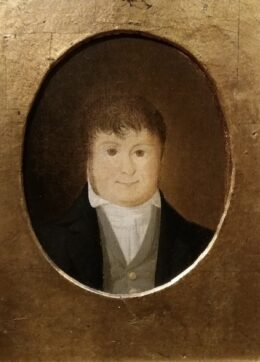
Printed
6 pages
Author(s)
Fais-me voir, Jérôme
ou la Racine merveilleuse
Fais-me voir, Jérôme (Let me see, Jérôme), better known as La Racine merveilleuse (The Wonderful Root) is one of the oldest plays of the repertoire for Guignol, generally attributed to Laurent Mourguet himself. It was published in the second collection assembled by Jean-Baptiste Onofrio (Théâtre lyonnais de Guignol, Lyon, N. Scheuring, 1870). The Musée des Arts de la Marionnette (Puppetry Museum) - Musée Gadagne in Lyon keeps a manuscript of the play, which belonged to Victor-Napoléon Vuillerme-Dunant before being acquired by the Rhône Prefecture on the 14th of January 1853, as well as several other manuscripts written later in the century. The traveller who returned from America is sometimes called Jérôme Mouton, which explains the title of the play.
The play is also part of the repertoire presented by Laurent Josserand and Vuillerme-Dunant during their stay in Paris in 1866-1868, as evidenced by a manuscript approved by the censorship authorities (National Archives, F.18/1216).
Here, we are concerned with the most authentic version of the play, that is, the handwritten version of Vuillerme-Dunant’s play transcribed by Paul Fournel. A more complete text, reconstituted by Gaston Baty at the beginning of the 1930s, is very close to the one published by Onofrio and is accessible online (see the link below).
The taming of the shrew
Durand, a man from Lyon who became rich when he was living in Martinique, comes back to Lyon and tries to have news of his former servant, Guignol. He meets Niafron who tells him that Guignol is kept prisoner by his wife Madelon in their house, and that she beats him, insults him and forces him to do all the housework. Durand entrusts a “wonderful root” imported from the Americas (which is nothing but a stick) to Niafron, and asks him to give it to Guignol. Niafron uses a ruse to make Madelon leave her house: he invites her to the restaurant and leaves her there before dessert to meet up with Guignol. Niafron shows Guignol how to be obeyed: first, he must threatens Madelon with the stick and tell her “Woman, see Jérôme” then, if she persists, he must say “Woman, beware of Jérôme” and, finally, on the words “Woman, feel Jérôme” he must beat her. When Madelon returns, Guignol enforces the lesson taught by Niafron and makes his wife submit and obey him.
Other titles
Publications and translations
La Racine merveilleuse (Fais-me voir, Jérôme), in Paul Fournel, L'Histoire véritable de Guignol. Lyon: Fédérop, 1978.
La Racine merveilleuse (Fais-me voir, Jérôme), in Paul Fournel, Guignol - Les Mourguet. Paris: Seuil, 1995.
